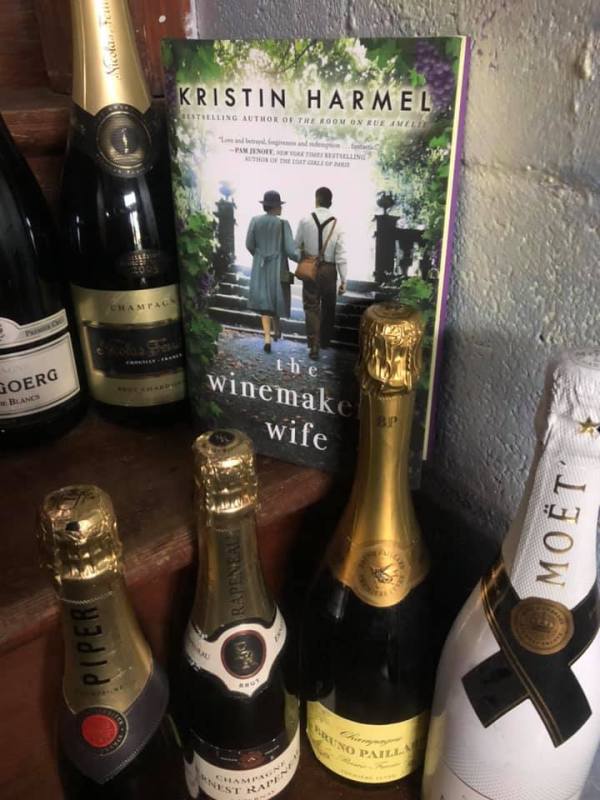
The Winemakers Wife features scenes from Champagne France, past and present
Living in coastal California 75 years after World War II and 100 years after World War I makes it hard to imagine what it was like to live in Europe under the threat of invasion and occupation. Knowing that 6 million Jews were methodically taken from their homes to work in the concentration camps and exterminated is horrible and heartbreaking.
Closer to home, along our coast, round concrete structures remain as sentinels at the shore testifying to our fears of invasion by the Japanese. Worse, Manzanar in eastern California tells the story of how we Americans rounded up fellow citizen and put them into concentration camps located throughout the US.
At Manzanar, my grandfather trained the men to protect themselves and their families from fire, but there was little he could do to protect them from racism and fear except to treat them with respect and to provide them with a purpose and a duty.
One way we can understand these stories about ourselves and to keep us from repeating them is to study and read about them. James and Jeanne Watsuki Houston’s Farewell to Manzanar is taught in many classrooms for this purpose. In California, however, we don’t see much to remind us of the atrocities of war, making it easier to forget– and making it even more important to visit places like Manzanar and learn about how war makes us dehumanize others in order to imprison, torture, and kill them.
In my travels to England and France in 2018 and 2019, I was repeatedly struck by how hard hit these countries were by repeated wars, and the extensive rebuilding recovery required.
For example, the Champagne region of France is located about a two hour drive northeast of Paris and about four hour drive to Frankfurt, Germany. Being so close to the border of Germany, the Nazis bombed much of the area, particularly the city of Reims.
During World War I, Germans bombarded the city severely damaging the cathedral. In World War II the city and its cultural institutions suffered again until the German surrender on May 7, 1945 in Reims. International efforts to restore the cathedral from the ruins required a lot of work to bring it back to its former glory as the traditional coronation site of kings.
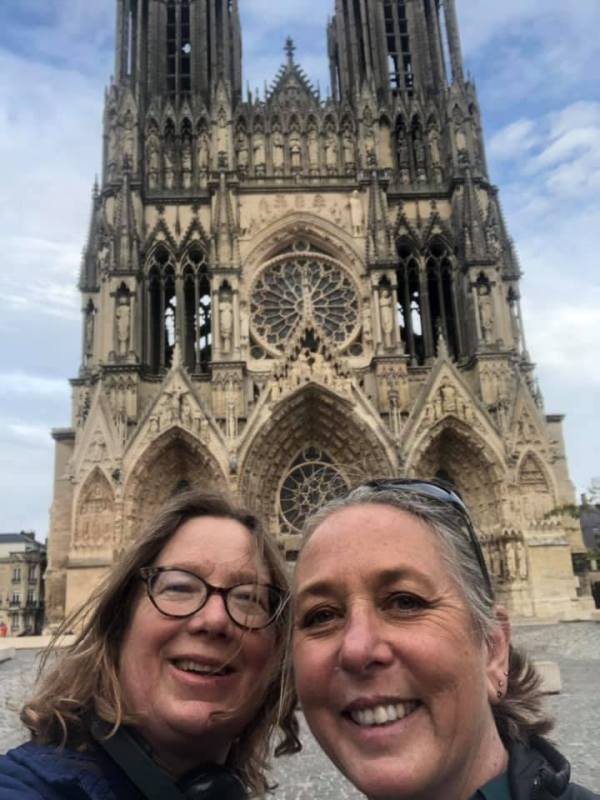
Sue Hill and I in front of the restored Notre Dame Cathedral in Reims in October 2019 while traveling in France to compete for the US Wine Tasting Team.
To learn more, walking tours of Reims, guided and unguided, can help travelers see the impact but if you can’t travel to Reims– or if you’d like to visit again– you can vicariously by way of The Winemaker’s Wife. Kristin Harmel gathers three narrative voices to weave four narrative strands that collectively help readers understand what it was like to live there before, during, and after the Nazi occupation of that city and region.
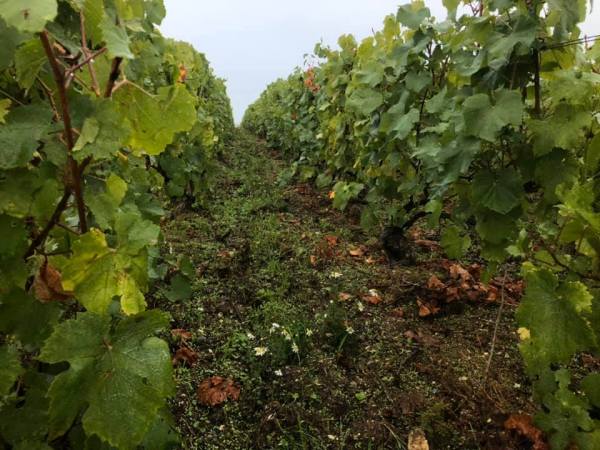
Lancelot’s biodynamic vineyards
In her 2019 book from Gallery Press (an imprint of Simon and Schuster) writer Kristin Harmel takes readers back in time to 1940 at the start of World War II and deep into the underground caves where the wine is made and stored –caves which served important purposes during the war, as you’ll find as you read the book. In the next chapter, readers find themselves in 2019 New York City and soon into modern France. Harmel brings you on the windy roads from the caves in the country to the towns including Epernay and Reims– in two time periods as she shares the deeply engrossing history and stories of each:
“No one was who they appeared to be in those days, mademoiselle. The Thierrys seemed to be collaborators, for example, so who would have thought that they were actually working with de Vogüé to undermine the Germans? At Piper-Heidsieck, the owners were hiding guns. At Krug, they were hiding pilots.” He tapped the base of Liv’s glass and added, “This champagne represents history, my dear. Heroism. Bravery. The people behind these wines helped save France.”
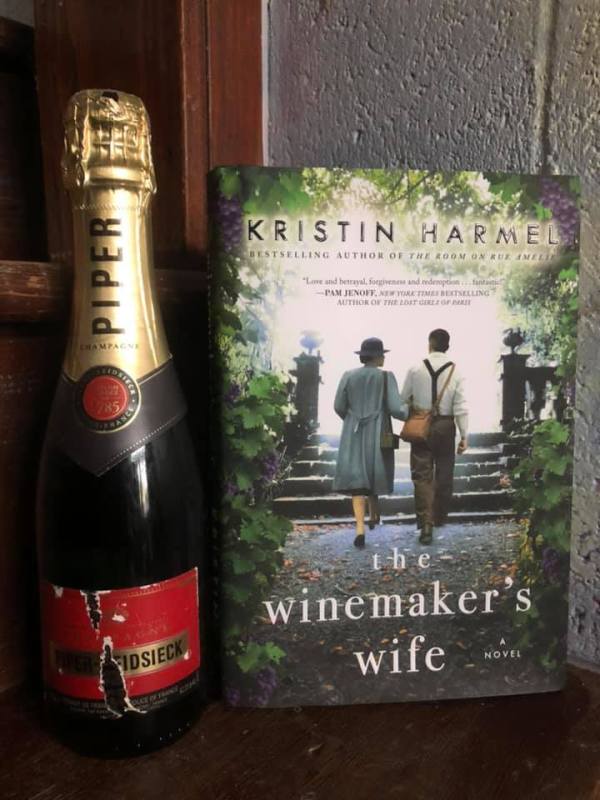
Piper-Heidsieck was one of the heroic wineries that played a brave and important role in WW2.
You’ll understand the deprivations and challenges people experienced in the war in contrast with the wealth and stability available to us today. Along the way, Harrmel helps readers empathize with some of the difficult moral choices people had to make and the long lasting repercussions and traumas associated with them:
“Was it possible that one sin could stain your soul forever? Or could one do enough good that a mistake of such magnitude could eventually be erased?”
From the perspective of a literature and creative writing professor like myself, The Winemakers Wife is not a great literary work or one that goes into depth about the trauma that the characters experienced. It does, however, offer more than a simple romance, bodice ripper, or historical fiction. Harmel cut her teeth writing sports and served on staff at People since 2000, and the book reads as easily as that magazine which for me is a guilty pleasure. Harmel knows how to keep a reader’s interest and the pages turning; since 2006, she has published 12 novels. Read more about author Kristin Harmel on her website.
While many of the plot points are expected, fortunately others are not, and at every point in the book, the narrative is kept alive by the joys of Champagne.
Speaking of the joys of Champagne, we certainly experienced many of them ourselves when we visited the region in October 2019 on our way to the Loire to compete on the US Wine Tasting Team in the World Championships.
We have several stories to tell about our visits to biodynamic Champagne producers including Philipe Lancelot pictured above who surprised us with a jaunt into his vineyards in Cramant and in Choully, Champagne-Ardenne where we tasted wine between rain storms and then chivalrously hosed off our muddy boots so we could go back into the winery and the cellars located in . But at this point only one article is published about Vincent Charlot which you can read here. I’ve been busy writing about our visits to the Loire like the biodynamic wines at Manoir de la Tete Rouge cab franc and pet nat and Vincent Careme’s organic Vouvray, and we have more biodynamic wines from the Loire to publish on Jan 15 from Xavier and Agnes Amirault (who I wrote about just a bit here).
While many of the wines in Champagne don’t make it out of the country or are very hard to find, there are several we can recommend if you go to your local wine store — or online or in a neighboring city!
A wine Ventura locals can find is Bruno Paillard which we wrote about it “Festive Sparklers From Around the World: Ferrari, Jaume, Bruno, Gran” — this wine is carried by the Cave.
Another wine that should be easier for you to find to enjoy with a nice meal and a fun book or celebratory evening this winter is Champagne Delamotte — which we drove by but didn’t get a chance to visit. Founded in Reims in 1760, at over 250 years old Delamotte is the fifth-oldest Champagne house in the region, and today produces Champagne in the Grand Cru village of Le Mesnil-sur-Oger so it certainly ties in with the book! There’s also a lot of history at Delamotte–in the late 1820s and 1830s, Nicolas Louis Delamotte hosted spectacular events including the coronation of France’s final king, Charles X. In 1927, the owners moved the house of Delamottte to Le Mesnil-sur-Oger. In 1988, the House of Delamotte joined with Champagne Salon under the umbrella of the parent company, Laurent-Perrier. Today Champagne Delamotte is under the direction of Didier Depond, the son of vine growers in the Loire Valley, learning from them the significance of terroir, patience, and stamina.
We’ve written about the Delamotte rose before here and here but this time we have a sample of the Brut to share with you.
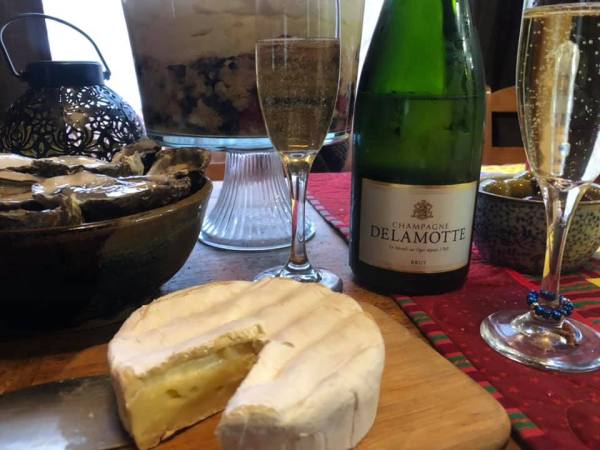
Champagne Delamotte NV SRP $80
sample provided by Vineyard Brands for my review consideration
Color: Delicate persistant beautiful perlage.
Nose: Yeast, brioche, green apple,
Palate: Green apple comes across on the palate as well, Delicate bubbles tingle across the tongue. There is a brininess to the wine. Lemon finish, lemon pastry,
Pairing: Beautiful with the oysters bringing out the ocean and a lovely creaminess in the oysters and salinity from the wine. We tried the wine with a strada with shrimp and the food and found it to be great with egg dishes, so consider quiche.
This is a lovely food wine.
Would be great with shrimp scampi, clams and linguine, just showcase the wine, don’t add too much cream or butter. It wants the cleanliness of the ocean, so cracked crab would be nice, doesn’t need a bunch of butter to accompany it. Seared scallops would be divine. The meatier oysters showcase the oysters more.
You could do a fancy meal with this wine, but is really better to have something simple and let the wine shine.
Smoked ham was also amazing with Delamotte Brut. It loves the salt. It was fantastic with the salt and the herbs on the focaccia. The focaccia totally brings out this herbaciousness that was not there before tasting the wine on its own. Dip the foccocia in a high quality olive oil and now it is over the top. When going back to the wine, the salinity of the oyster continues to shine through. lingering, lingering, lingering finish.
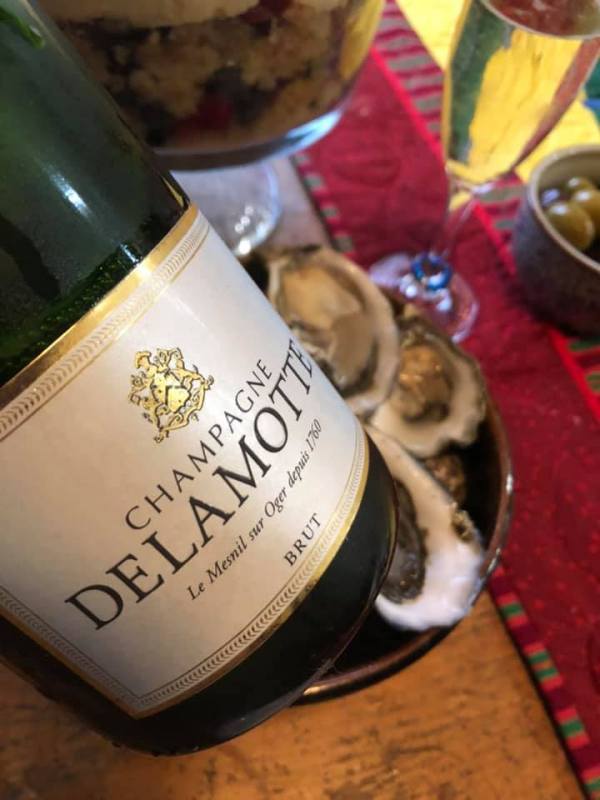
PS Happy Sparkling Wine Day Tuesday Dec 31! And happy New Year’s too!








The US prefers to hid our atrocities to the Japanese. People need reminding to not repeat. It will be interesting to see how our atrocities on the Mexican border play out in history.
LikeLiked by 1 person